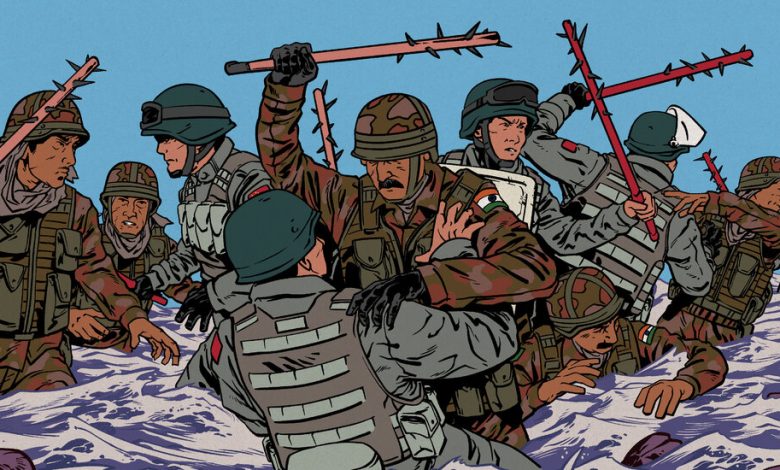Why Do India and China Keep Fighting Over This Desolate Terrain?

The 2,100-mile border separating India and China passes through some of the world’s most inhospitable terrain. In the west, it runs along India’s Ladakh region, at an altitude of 13,000 to 20,000 feet. During the months when the area isn’t covered in snow, the ground resembles a moonscape. The earth is sandy, strewn with rocks and pebbles; not a blade of grass grows anywhere; there are no visible signs of animal life. In winter, temperatures can drop to –40 degrees. The bleak conditions and barren vistas can induce despair in those who set foot on the land. “I’ve been to those places,” a former Indian diplomat who now works for an international Buddhist organization in Delhi told me. “When you visit, you tend to think, Who the hell even wants this area?”
Listen to this article, read by Brian Nishii
But that’s not how nation-states view territory, no matter how desolate it is. That is why India and China have their armies deployed on these heights along an unmarked and, in many places, contested boundary between the two countries. In the absence of any fencing or barbed wire to demarcate territory, soldiers from each nation contend with considerable ambiguity when conducting patrols along what’s known as the Line of Actual Control. Vinod Bhatia, who served as director general of military operations for the Indian Army and is now retired, describes it as a line of perceptions.
“It’s four lines, actually,” he told me when I visited Delhi last year. “One is the Indian perception of the Line of Actual Control. Another is the Chinese perception of the Line of Actual Control. Third is the Indian perception of the Chinese perception of the Line of Actual Control — because we have a perception based on their line of patrolling. And the fourth is, of course, the Chinese perception of the Indian perception of the Line of Actual Control.”
This lack of clarity means that there are several places along the border that are effectively a no-man’s land, where both Indian and Chinese troops carry out patrols. Soldiers from each side routinely leave empty cigarette packets and beer cans behind as marks of territorial claim. At the same time, soldiers on each side are legally bound to exercise restraint during patrols, according to a 1996 agreement between the two countries that prohibits the use of firearms and munitions at the border.
When units from the two sides run into one another, they follow a mutually agreed upon protocol to avoid confrontation. “We pull out a banner that says in English and in Chinese: ‘You are in our territory. Please go back,’” Bhatia told me. “And they hold up a banner of their own that says in Hindi and in English: ‘You are in our territory. You go back.’”
